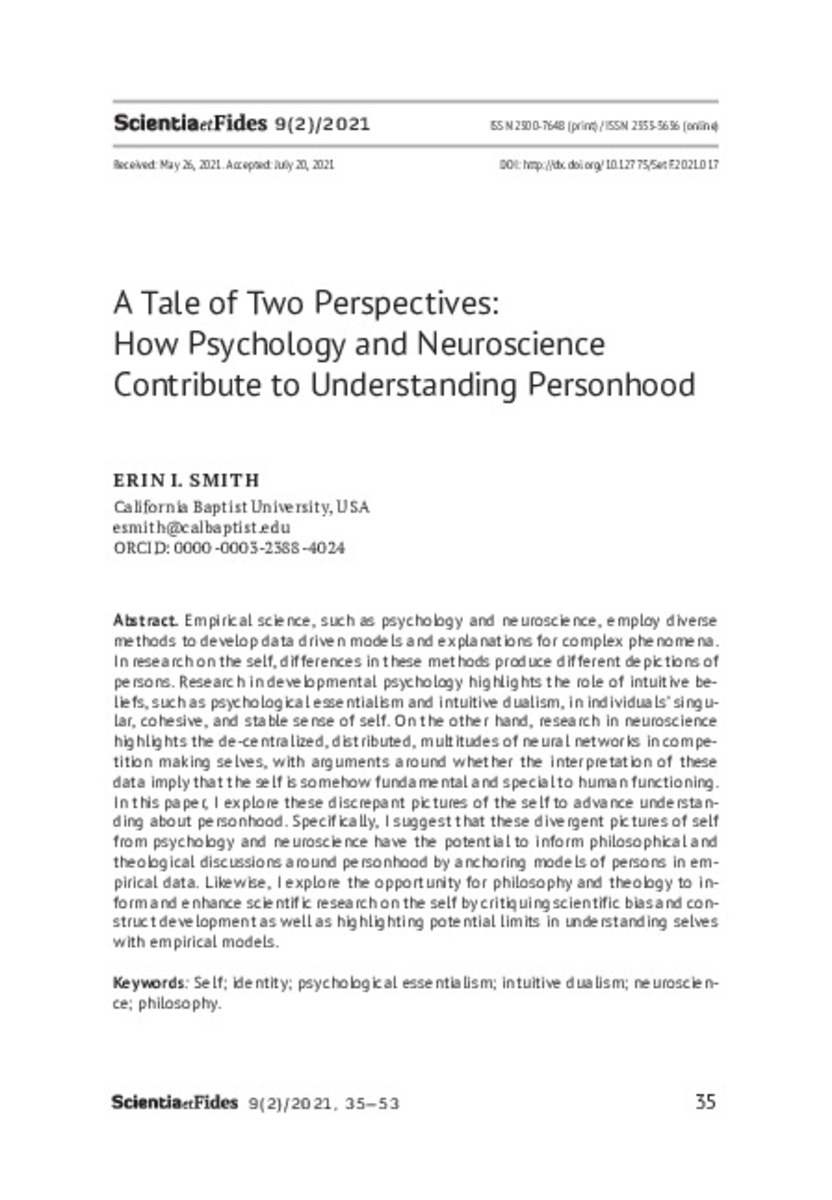A Tale of Two Perspectives: How Psychology and Neuroscience Contribute to Understanding Personhood
Palabras clave :
Self
identity
psychological essentialism
intuitive dualism
neuroscience
philosophy
Fecha de publicación :
2021
Editorial :
Uniwersytet Mikołaja Kopernika
Cita:
Smith, E.I. (Erin I.). "A Tale of Two Perspectives: How Psychology and Neuroscience Contribute to Understanding Personhood". Scientia et Fides. 9 (2), 2021, 35 - 53
Aparece en las colecciones:
Estadísticas e impacto
0 citas en

0 citas en

Los ítems de Dadun están protegidos por copyright, con todos los derechos reservados, a menos que se indique lo contrario.








